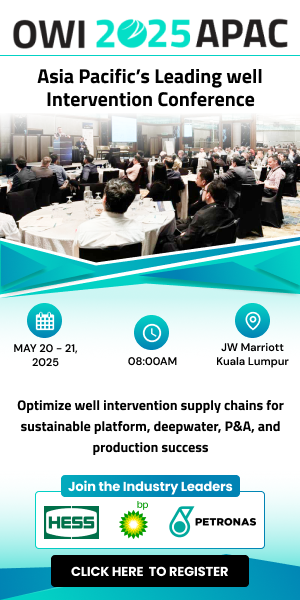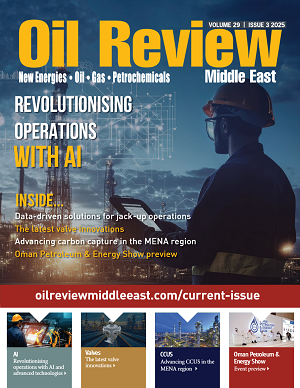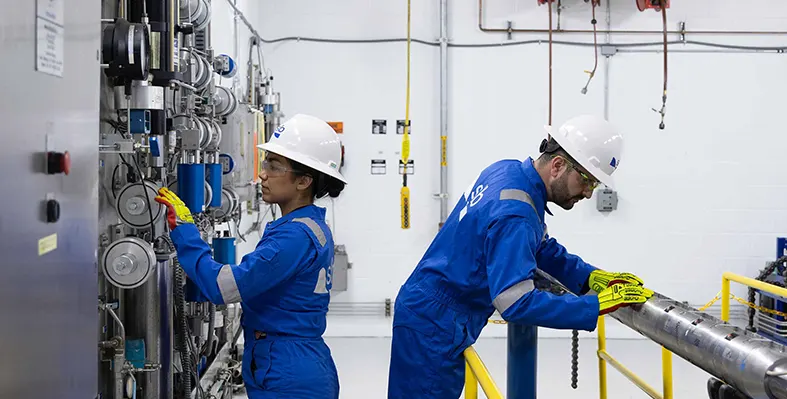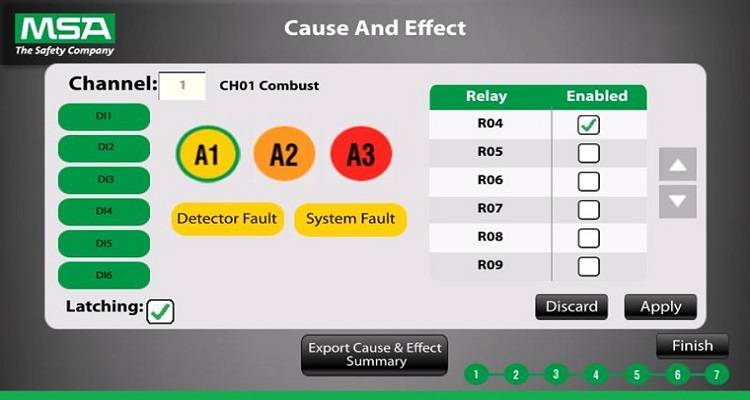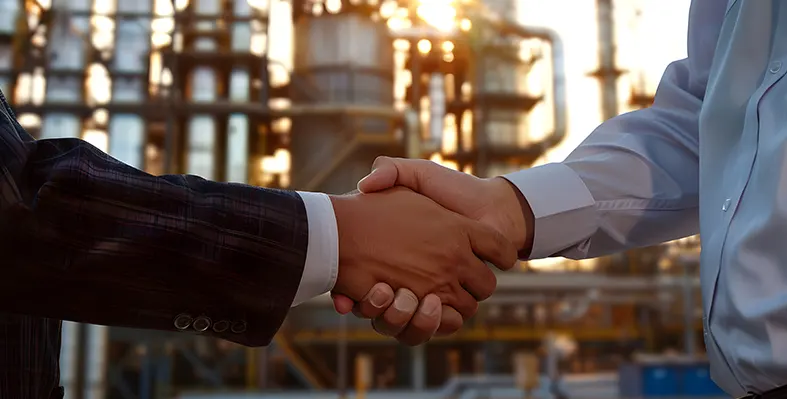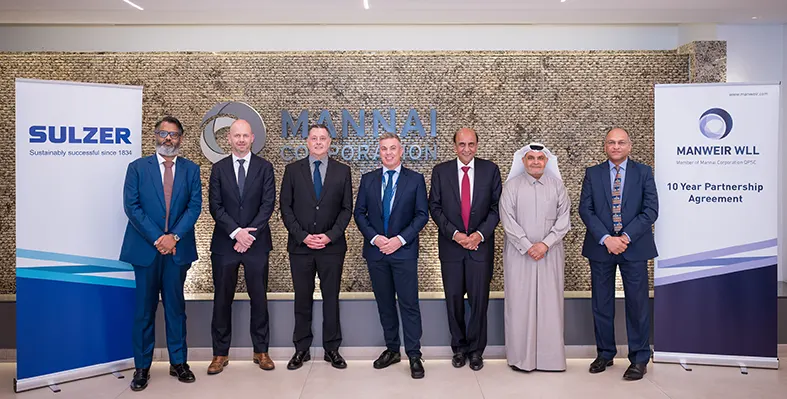In The Spotlight
In an exclusive interview, Dr. Darius Ngo, Fellow and Senior Vice President - Yokogawa Global Business Consulting, discusses how the company is helping to transform the oil and gas sector through AI and advanced technologies
How are AI and advanced technologies transforming the oil and gas sector, and how can they help companies to operate more efficiently, safely and sustainably?
Industry 4.0 is transforming businesses through digitisation and the use of integrating artificial intelligence (AI) and advanced technologies embedded solutions has demonstrated to revolutionise the oil and gas sector by enhancing the production efficiency, safety and sustainability of business processes. Industrial AI and advanced solutions are generally pivotal in predictive maintenance, enabling real-time monitoring and early detection of equipment anomalies. This proactive approach minimises downtime, reduces maintenance costs, and enhances overall operational efficiency.
In a groundbreaking achievement, Yokogawa, in collaboration with JSR Corporation, has successfully operated a process plant autonomously for more than 35 consecutive days since 2022 using reinforcement learning AI. This marked the first instance where AI managed plant operations without human intervention, optimising for quality, yield, energy efficiency, and responsiveness to disturbances. With a stronger demand of Industrial AI, a robust composable platform is evolving and enables integration of AI for edge computing, facilitating immediate data processing and predictive analysis, which is crucial for energy-intensive sectors like oil and gas and power. This holistic approach leverages AI, cloud solutions, IoT, and real-time data analytics to create connected and efficient operations, driving innovation and sustainable growth within the oil and gas industry.
How do you view the receptiveness of Middle East operators to AI and the latest digital solutions, and how do you view the market in the region’s oil and gas sector for your solutions? Are there any projects you would like to highlight?
The Middle East's oil and gas sector is increasingly embracing artificial intelligence (AI) and digital solutions to enhance operational efficiency, sustainability, and competitiveness. Leading regional operators such as Saudi Aramco and ADNOC have already made significant investments in AI technologies, focusing on enhanced efficiency and resource optimisation to gain competitiveness in the global market.
Yokogawa recognises the Middle East as a pivotal region in the global oil and gas sector, reflecting its strategic importance through significant investments and an established local presence. Many of the local operators are already users of Yokogawa’s advanced solutions and they are accelerating adoption of embedded AI to drive Industrial Automation to Industrial Autonomy (IA2IA). Yokogawa’s solutions and robust integration capability have repeatedly demonstrated to improvise safety, productivity and sustainability.
In Yokogawa, we are pleased to have successfully implemented Yokogawa’s AI/FKDPP reinforcement learning and advanced digital solutions among the Middle East regional operating companies. This embedded AI technology has transformed operations into full autonomy in process control without human intervention. This has also expedited the next phase of generative AI combined with large language models (LLM) for an AI-based OT intelligent advisory system.
See the full interview in the latest edition of Oil Review Middle East here:
Gas is set to increasingly displace oil used for power generation and industrial facilities in Saudi Arabia thanks to the giant Jafurah unconventional gas project, according to Rystad Energy analysis
By tapping into unconventional gas, Saudi Arabia could displace up to 350,000 bpd of crude burn by 2030, according to Rystad. The increased gas supply would not only curb domestic crude use but also free up more oil and refined products for export, strengthening the country’s position in global energy markets. This shift comes at a critical time, as oil product demand in Saudi Arabia is projected to rise by approximately 100,000 bpd between now and 2030, largely driven by increasing consumption of gasoline and diesel.
The Jafurah unconventional gas field, the largest liquid-rich shale gas play in the Middle East, contains an estimated 200 trillion standard cubic feet (scf) of natural gas. The Jafurah project, set to start production this year, is a key component of Saudi Arabia’s Vision 2030, which seeks to boost gas production by 60% from 2021 levels while diversifying the nation’s energy mix. The project will see more than US$100bn in investment in the next decade, positioning Saudi Arabia as the world’s third-largest shale gas producer.
“Saudi Arabia is stepping up investment in natural gas as a cleaner, lower-carbon alternative to oil and coal. This strategic pivot, alongside the OPEC+ decision to cap Aramco’s oil production at 12 million barrels per day by 2027, is designed to support price stability while increasing domestic gas consumption. Output is projected to climb to 13 billion cubic feet per day (Bcfd) by 2030, setting the stage for a major expansion in gas supply. This will allow the nation to redirect more crude for export, reinforcing its influence in the global energy landscape. As the initiative advances, the success of this shift will depend on robust midstream infrastructure, downstream integration and deeper-zone drilling campaigns,” said Pankaj Srivastava, senior vice president, Commodities Markets – Oil.
On the domestic front, the economics of fuel switching continue to favour gas over crude for power generation, resulting in operational costs that are six to eight times lower per kilowatt-hour. These cost advantages underpin Saudi Arabia’s strategy to replace crude with gas in its power mix, enabling the Kingdom to redirect more crude toward export markets and strengthen fiscal returns, says Rystad.

The report provides expert insights to help oil and gas professionals navigate digital transformation with confidence. (Image source: DataPARC)
A new report from dataPARC, produced in association with Oil Review Middle East, provides essential guidance to help oil and gas professionals navigate the industrial analytics landscape with confidence
Industrial analytics are transforming operations in the oil and gas sector, providing actionable insights to enhance operational efficiency and facilitate better and faster decision-making. The market is constantly evolving, with AI and machine learning are ushering in a new era of predictive and prescriptive solutions, automation and autonomous operations, and AI tools increasingly taking on a lot of the heavy lifting.
With many players in the industrial analytics space, companies looking to migrate from legacy systems, or looking to upgrade their capabilities, will need to take a number of factors into account when selecting a new system, from ease of integration and conversion to advanced analytics capabilities and licensing.
This report provides guidance on selecting a new platform, identifying the criteria that need to be taken into consideration and the main features that should be looked for. It highlights the strengths of the dataPARC platform, and gives real-world examples of how industrial analytics are transforming operations in the oil and gas sector, through illustrative case studies.
Whether you're looking to replace legacy tools such as ProcessBook or explore AI-powered analytics, this report delivers the strategies, comparisons, and case studies you need to move forward.
Why download the report?
• A clear roadmap for smarter industrial analytics
• Real-world success stories from oil & gas operations
• Actionable insights for IT/OT leaders
• Expert guidance from a proven global provider
Don’t miss this opportunity to lead your organisation toward greater operational efficiency.
Download the report now and start driving meaningful change with dataPARC.
-
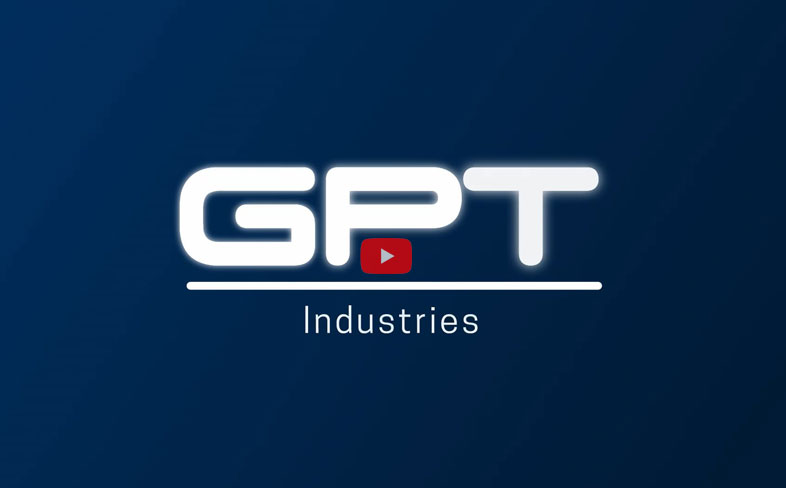
GPT Industries - Iso-Smart
-
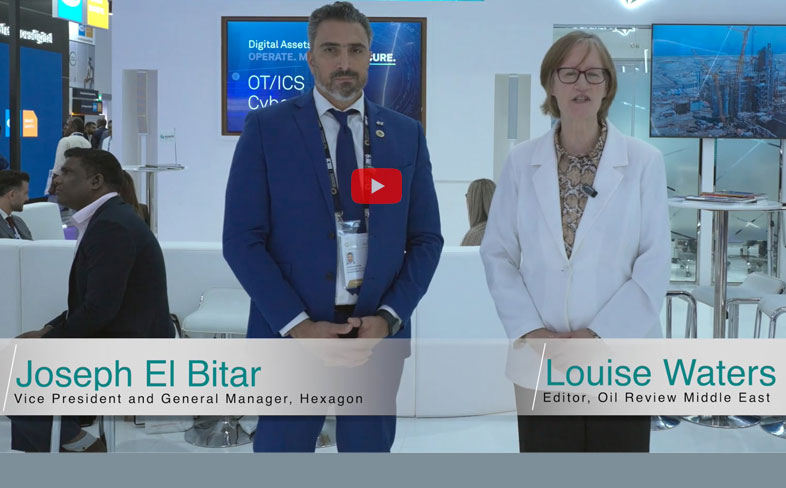
ADIPEC 2024 - Exclusive Interview with Joseph El Bitar, Hexagon
-
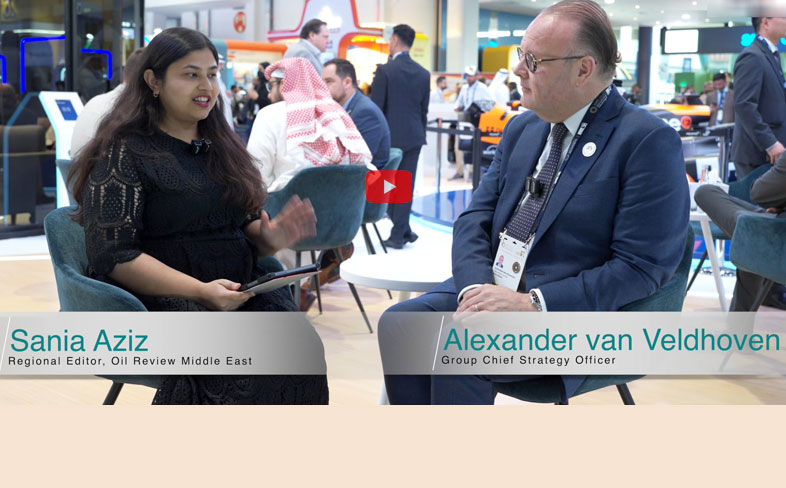
ADIPEC 2024 - Exclusive Interview with Alexander van Veldhoven, Bapco Energies
-
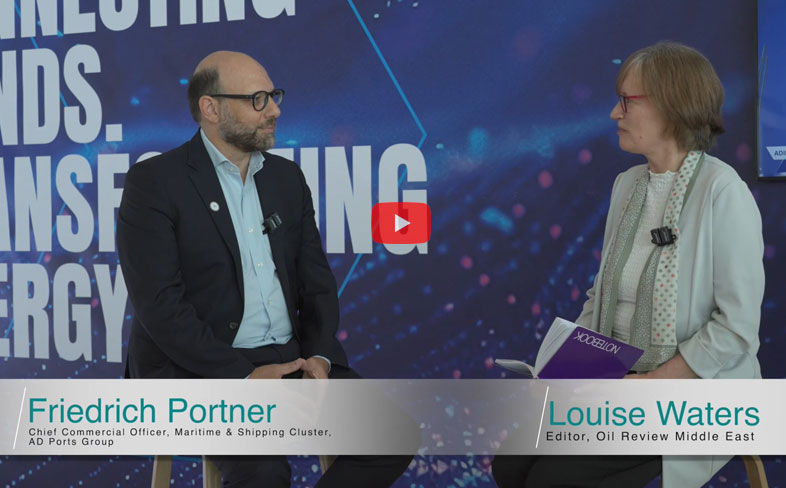
ADIPEC 2024 - Exclusive Interview with Friedrich Portner, Safeen Group
-
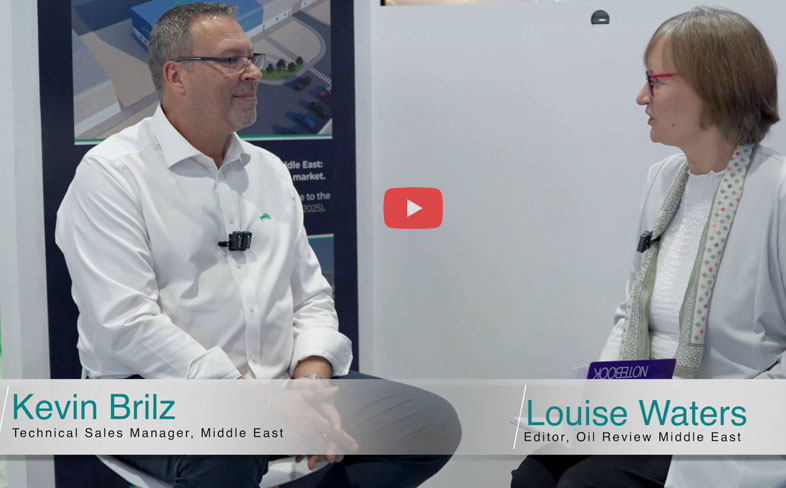
ADIPEC 2024 - Exclusive Interview with Kevin Brilz, Fishbones
-
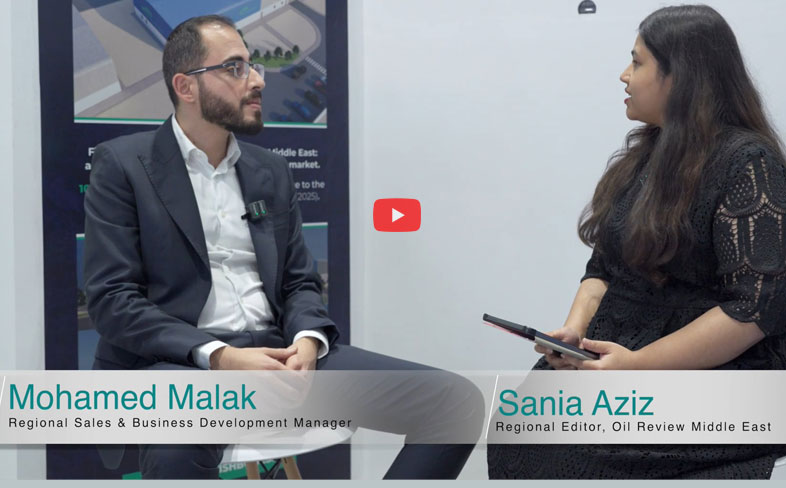
ADIPEC 2024 - Exclusive Interview with Mohamed Malak, Fishbones
-

ADIPEC 2024 - Exclusive Interview with Dileep Divakaran, SLB
-
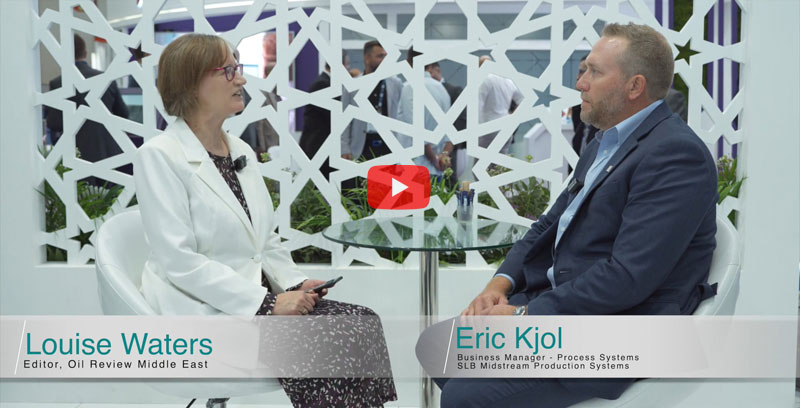
ADIPEC 2024 - Exclusive Interview with Eric Kjol, SLB
-
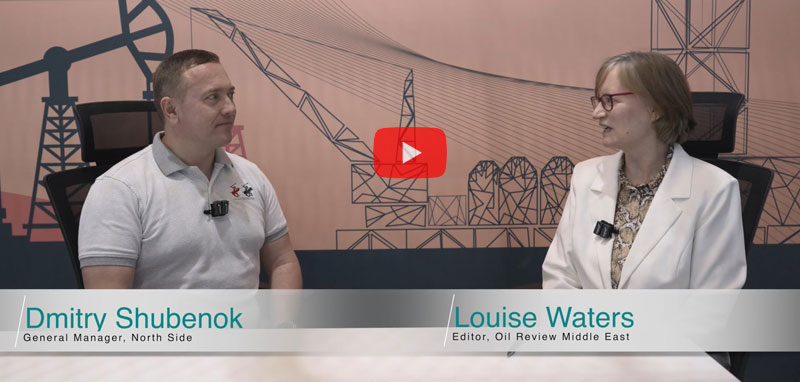
ADIPEC 2024 - Exclusive Interview with Dmitry Shubenok & Aleksandr Dolgikh, North Side
-
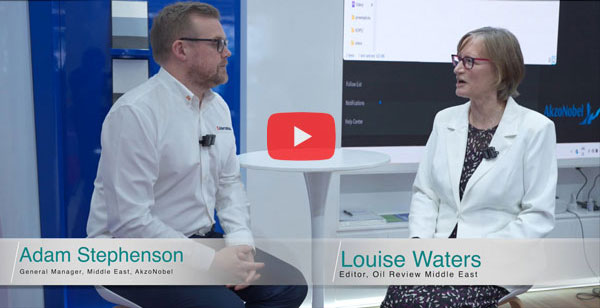
ADIPEC 2024 - Exclusive Interview with Adam Stephenson, AkzoNobel
-
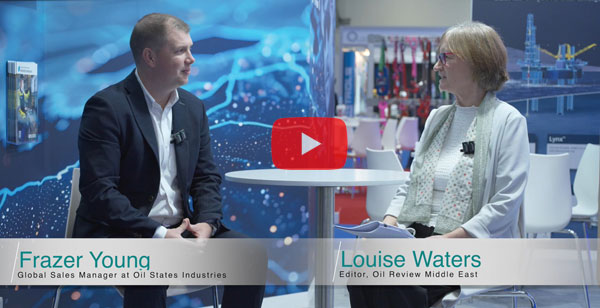
ADIPEC 2024 - Exclusive Interview with Frazer Young, Oil States
-
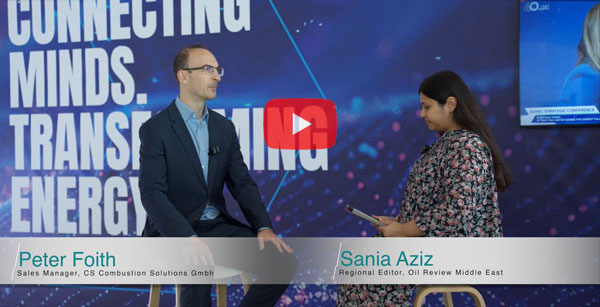
ADIPEC 2024 - Exclusive Interview with Peter Foith, CS Combustion Solutions GmbH
-

Exclusive interview with Maurits van Tol
-
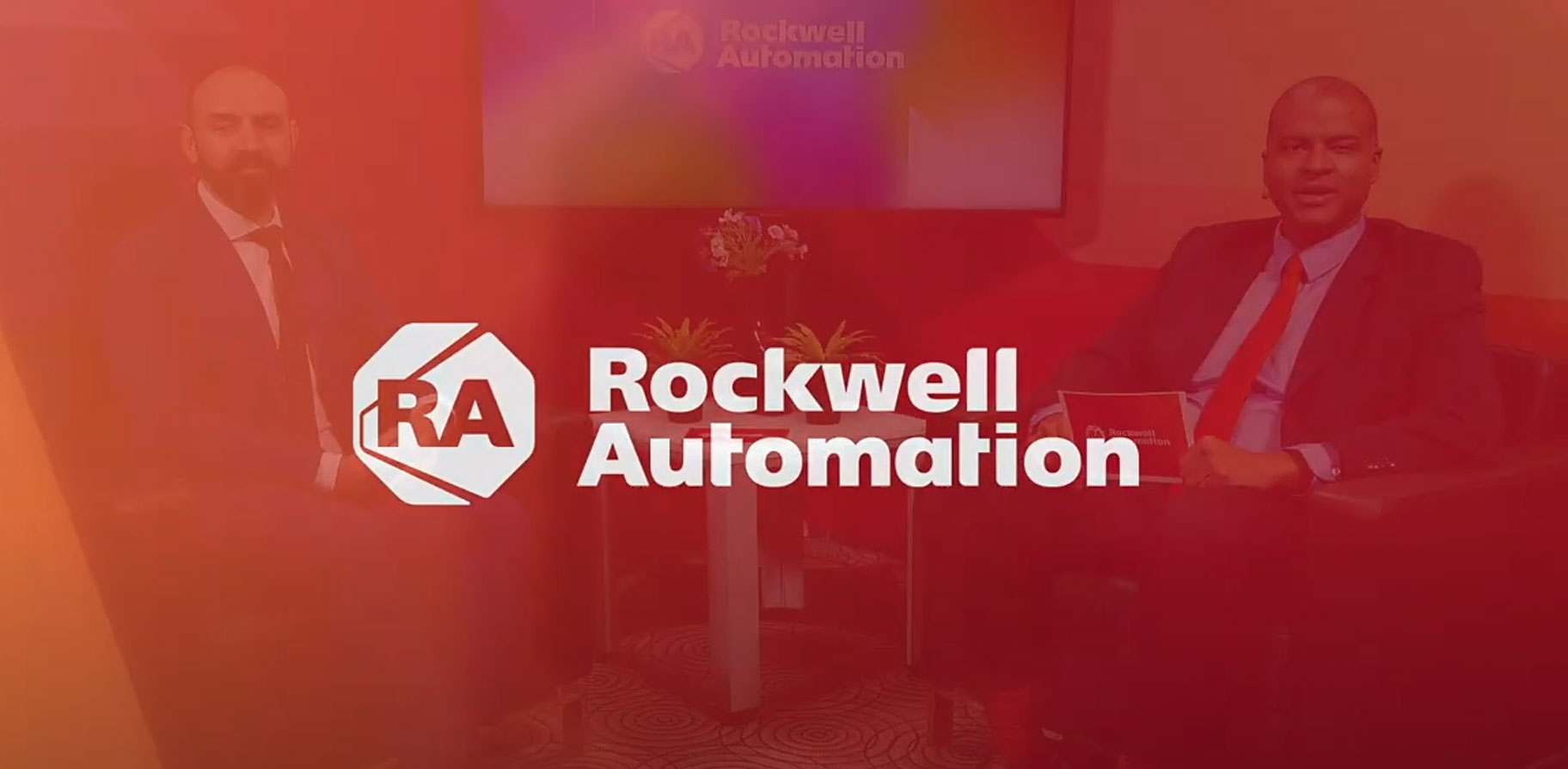
Rockwell Automation interview with Sebastien Grau
-
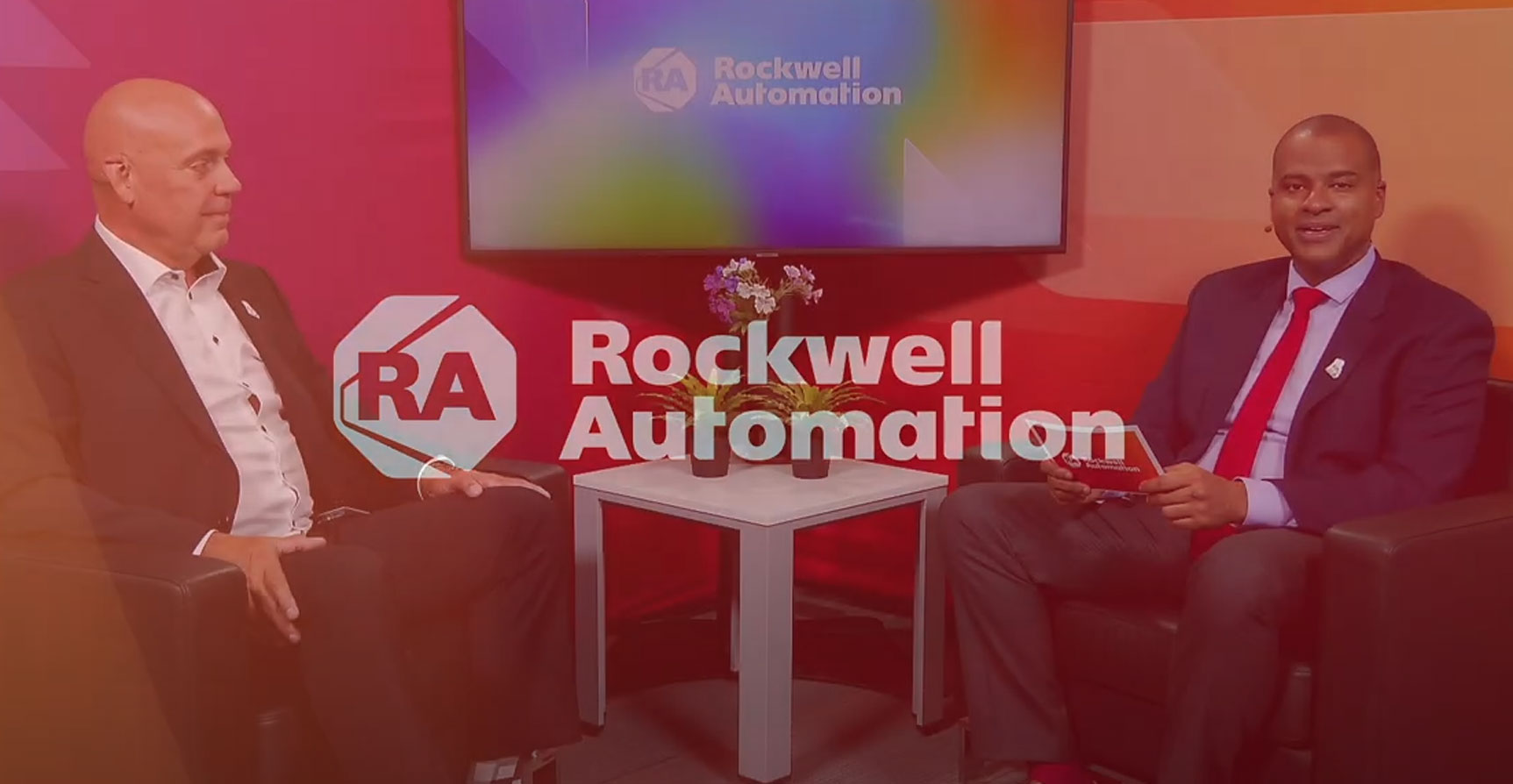
Rockwell Automation interview with Michael Sweet
-
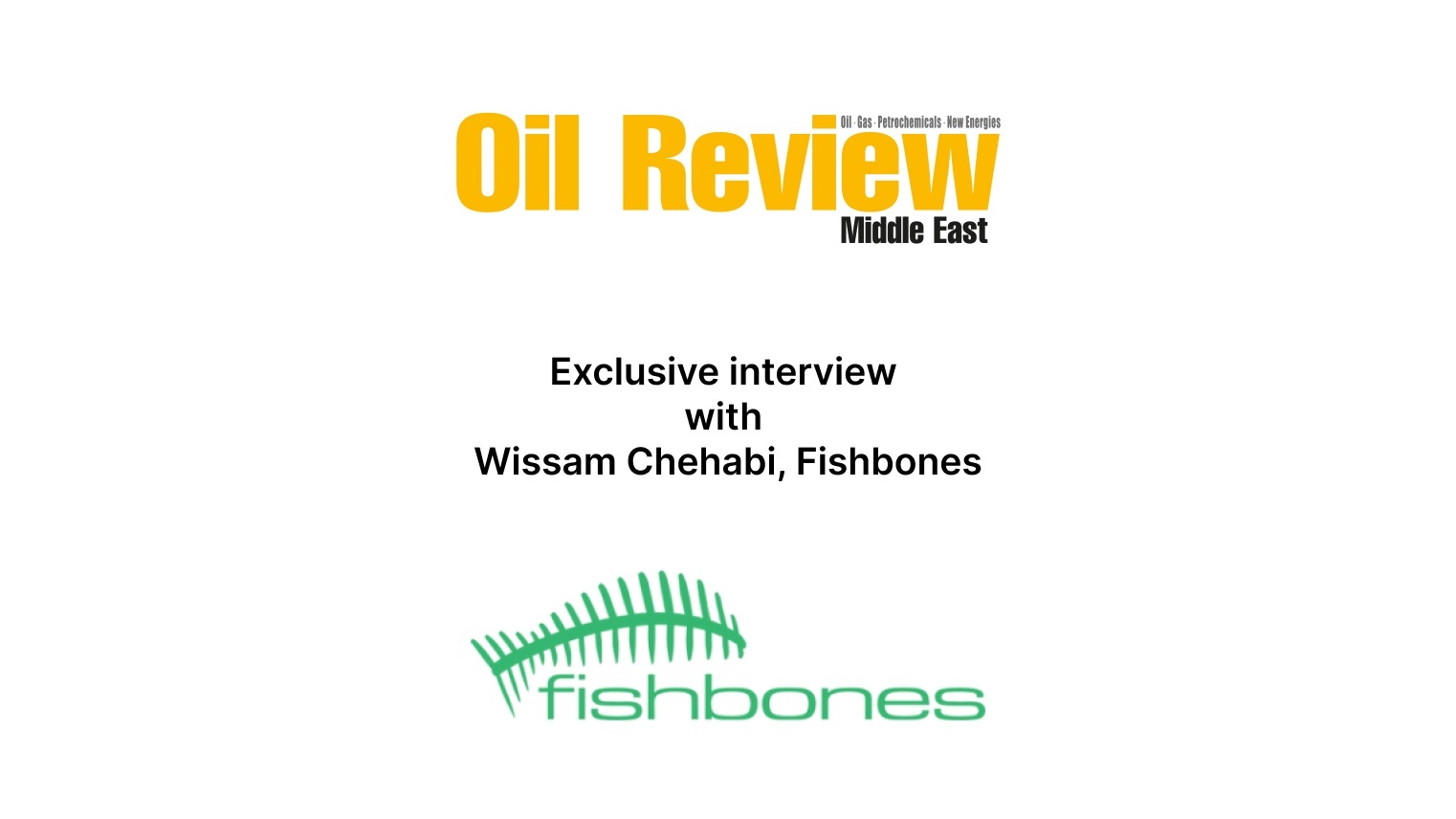
ADIPEC 2023 - Exclusive interview with Wissam Chehabi, Fishbones
-

Rockwell Automation interview with Kalypso’s Rodrigo Alves & Knowledge Lens’ Ganesh Iyer
Viridien, through its subsidiary CGG Services SAS, has been awarded a contract to reimage two legacy 3D seismic data sets totalling 2,400 sq km in the Hassi Bir Rekaiz concession in the Berkine Basin, Eastern Algeria
The contract was awarded by Groupement Hassi Bir Rekaiz, a joint Sonatrach and PTTEP joint venture.
During the 13-month project, Viridien scientists are completely reimaging and merging the two legacy seismic datasets, originally acquired in 2011 and 2013. To meet the client’s challenging imaging objectives, Viridien is applying the latest technology to deliver more detailed seismic velocity modelling and improved reliability of seismic amplitude, phase and frequency attributes for quantitative interpretation and enhanced fault imaging.
Peter Whiting, EVP, Geoscience, Viridien, said, “We are happy to receive another award from Algeria, showing client confidence in our experience and differentiation in this growing market. We continue to develop and refine our technology, allowing us to extract more and more useful information from seismic data. This generates value for our clients, allowing them to do much more with the survey data they already have. The ultimate value lies in improved reservoir insights, reduction of uncertainties and increased drilling success.”
Last year, Viridien won a contract to conduct seismic imaging for a project in eastern Algeria for Groupement Berkine - a joint venture between Sonatrach and Occidental Petroleum, among other global partners. This imaging campaign covers an area of 3,400 sq km, capturing high-density onshore data set over blocks B404a and B208 of the Berkine Basin.
Algeria is seeking to increase oil and gas production, boost foreign investment and advance exploration. To this end, the National Agency for the Valorization of Hydrocarbon Resources (ALNAFT) launched a bid round in October, as part of a five-year licensing plan. The offering consisted of six blocks covering 152,000 sq km. Closing date for bid submissions was 15 April.
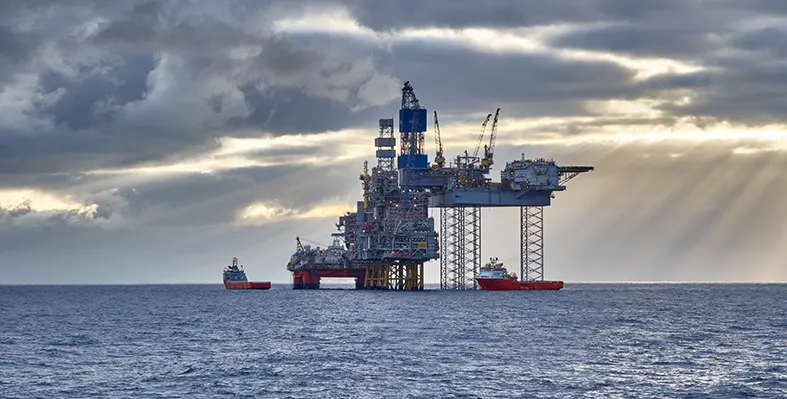
Continuous monitoring helps operators determine the best conditions for rig movement and positioning. (Image source: Adobe Stock)
Sahil Kochhar, head of Presales, Miros outlines the benefits of smart, data-driven solutions for effective jack-up operations
For around 70 years, jack-up rigs have been at the forefront of offshore oil and gas exploration, acting as mainstays for drilling and production activities in most of the world’s hydrocarbon hotspots.
These mobile, self-elevating platforms provide stability in dynamic marine environments but, by their very nature, they are also often required to work in some of the most challenging environments known to the industry. They face significant challenges from waves and currents, which can drive structural integrity concerns and create potential safety issues.
The solution to this issue lies, as it so often does in offshore operations, in leveraging real-time environmental data. In the case of jack-ups, air gap measurements and wave/current monitoring are of particular criticality. By adopting cutting-edge solutions and technologies, operators can unlock new levels of performance, reduce risks, and optimise their offshore operations.
Understanding the air gap
The air gap refers to the vertical distance between the highest anticipated wave crest and the underside of a jack-up rig’s hull or deck.
Maintaining an adequate air gap is essential for structural integrity and operational safety. If compromised waves can slam into the structure, increasing stress on the platform and endangering personnel.
A well-calculated air gap, however, ensures stability, reducing downtime caused by rough sea conditions. It also avoids repeated wave impact, minimising the chances of fatigue, cracking, and deformation, extending the service life of the rig.
Real-time measurements
Real-time measurements capture key sea state parameters such as wave height, wave period, direction, current speed, and current direction. Up to the second data is gathered from various advanced sources - including wave buoys, radar systems, and subsea sensors – and used to inform decision-making, improve operations and enhance safety.
Actual conditions can often deviate from forecasts, but real-time readings of the sea-state removes the ambiguity, guaranteeing informed, timely decisions. Dynamic positioning and preload operations also benefit from wave and current insights, reducing risks of leg slip and seabed instability, while continuous monitoring highlights structural stress points early, allowing for pre-emptive action before maintenance issues escalate.
Enhanced jack-up operations through data-driven insights
The safety of people, the environment and assets are of the upmost importance during any offshore operation, be it with a jack-up rig or otherwise. With real-time wave data, operators can maintain safe clearance under the rig, preventing wave impact damage and guaranteeing structural integrity.
Continuous monitoring helps operators determine the best conditions for rig movement and positioning, improving efficiency, reducing costs and minimising the chances of an unexpected incident occurring.
Historical data also enhances future jack-up designs and operational procedures, fostering long-term resilience and reliability. Solutions like Miros’ RangeFinder and Wavex provide an integrated approach to monitoring critical environmental factors, serving as an example of how real-time measurements can contribute safer and more efficient jack-up operations.
How AI and predictive analytics are reshaping offshore operations
By combining RangeFinder’s precise air gap measurements with Wavex’s real-time wave data, operators get a holistic monitoring system for jack-up operations. With this powerful combination of live insights, operators gain a comprehensive view of their offshore environment, allowing them to make informed, data-driven decisions; reduce operational risks and enhance safety; and increase overall efficiency and reduce downtime.
As nearshore oil and gas reserves dry up and offshore exploration moves into deeper, more unpredictable waters, the role of real-time environmental data will become even more critical. Emerging technologies, like Miros’s PredictifAI – which pairs radar technology with Artificial Intelligence (AI) to predict waves and vessel motion – offer the potential to refine predictive analytics, allowing operators to anticipate and respond to changing sea states with unprecedented accuracy. By embracing these innovations, jack-up operators can drive greater safety, efficiency, and long-term profitability in their offshore ventures.
In an industry where precision and resilience are paramount, the future of jack-up operations depends on integrating smart, data-driven solutions that enhance situational awareness and enable proactive decision-making.
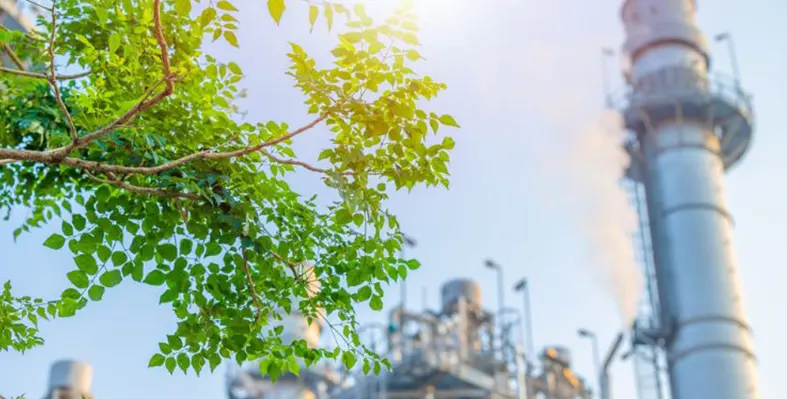
The petrochemical industry is increasingly turning its attention to chemical recycling. (Image source: Synergy)
As environmental concerns and regulatory pressures gain precedence, the petrochemical industry is increasingly turning its attention to chemical recycling
Often positioned as a potential game-changer, this technology seeks to offer a more sustainable path by converting plastic waste back into its original chemical components, enabling the production of new materials with properties comparable to those made from virgin feedstocks. Its attractiveness lies in addressing the twin evils – the plastic waste crisis and the need for higher-quality recycled materials.
How does chemical recycling work?
Chemical recycling, also referred to as advanced recycling, differs from mechanical recycling in both process and potential. Rather than grinding and melting plastics, it involves breaking down polymers into monomers or other base chemicals through processes such as pyrolysis, gasification, or depolymerisation. This allows for the creation of new plastics suitable for applications that require high purity, including food-grade packaging, where mechanically recycled plastics often fall short.
Several companies around the world have begun to scale up their chemical recycling initiatives.
• ExxonMobil, for example, has announced plans to invest US$200mn to expand its chemical recycling capabilities at its Baytown and Beaumont complexes in Texas. With its proprietary Exxtend technology, the company aims to process up to half a million tons of plastic waste per year by 2027.
• In Europe, Eastman Chemical is building a US$1bn molecular recycling facility in France. Once operational, it is expected to recycle up to 160,000 tons of plastic waste annually using polyester renewal technology.
• In India, Reliance Industries has become a pioneer in this space, producing circular polymers at its Jamnagar refinery, which has received ISCC-Plus certification to ensure sustainability and traceability.
However, the economic challenges associated with chemical recycling are substantial. These technologies are energy-intensive, resulting in higher operational costs compared to traditional recycling or even the production of virgin plastics. In some cases, chemically recycled polyethylene terephthalate (PET) can cost two to three times more than its virgin counterpart, limiting its competitiveness. Additionally, the process often requires clean and sorted plastic waste as feedstock, which is difficult to obtain in many regions due to inadequate waste segregation and contamination. This issue not only affects cost but also scalability.
Advantages of chemical recycling
From an environmental standpoint, chemical recycling does offer certain advantages. Studies indicate that pyrolysis — a commonly used method in chemical recycling — can emit up to 50% less CO₂ than the incineration of mixed plastic waste. The process also has the potential to eliminate hazardous substances embedded in plastics, such as legacy chemicals and substances of very high concern (SVHC), resulting in cleaner end-products. Nevertheless, these benefits must be weighed against the significant energy inputs required for these processes. Without low-carbon energy sources or efficiency improvements, the net environmental gains may be limited.
Looking ahead, the development of chemical recycling will depend on a combination of technological, regulatory, and economic factors. Enhancing waste collection and sorting infrastructure will be crucial for improving feedstock quality. Policy frameworks that clearly define recycled content and support traceability will help create market confidence. Meanwhile, collaboration between governments, research institutions, and industry stakeholders could accelerate innovation and reduce costs over time.
While chemical recycling is unlikely to single-handedly resolve the petrochemical sector’s sustainability challenges, it may play a valuable role within a broader strategy for circularity. When complemented by upstream design changes, responsible consumption, mechanical recycling, and waste minimization efforts, it has the potential to contribute meaningfully to the sector's transition.
Whether it ultimately transforms the petrochemical industry or becomes a niche complement to existing methods will depend on how these challenges are addressed in the years to come.
This article is authored by Synergy Consulting IFA.
The American Bureau of Shipping and Akselos S.A., provider of structural performance management software have completed a joint technical assessment for structural digital twin technology, enabling more accurate and reliable assessments of structural integrity for FPSOs
The digital twin solution can reduce inspection and maintenance costs by up to 33%, minimising both planned and unplanned downtime by predicting stress and fatigue before failures occur, and enhancing safety by limiting human exposure in hazardous operational areas. This ultimately saves millions of dollars by extending FPSO life and minimising production losses.
Akselos’ SPM software provides a high-fidelity, near real-time digital twin of the entire FPSO. By combining inspection records, metocean conditions, and cargo operations into one dynamic model, operators have access to a live, continuous view of structural performance. This facilitates real-time monitoring, identification of stress concentrations, and on-demand fatigue analysis to support data-driven maintenance and risk-based inspections.
When combined with ABS’ Condition Manager and Eagle Twin inspection data management and condition tracking software tools, the Akselos software is capable of monitoring real time load and condition information within a digital twin framework that enables full life cycle support of an offshore asset. Akselos’ SPM software also integrates with ABS’s Eagle Unified suite, providing operators with a unified platform for asset performance management and class compliance.
“This collaboration reinforces the role of high-fidelity digital twin technology in the future of offshore structural integrity management,” said Matt Tremblay, senior vice president, Global Offshore at ABS. “By combining real-time operational data with advanced simulation, Akselos is enabling a more predictive and performance-based approach to asset management—fully aligned with the industry’s drive toward safer, more efficient operations.”
“This joint work confirms the robustness of our software and reinforces the growing momentum for digital transformation in offshore oil and gas,” said Claus Reimers, chief product and technology officer at Akselos. “We enable operators to simulate the structural integrity of the entire FPSO in real time and at full fidelity—supporting smarter, safer decisions across the asset lifecycle.”
Oil Review Middle East hosted a very well-attended webinar on 20 November on the future of offshore operations, in association with SAFEEN Group, part of AD Ports Group
The webinar explored the latest trends and challenges in the rapidly evolving world of offshore operations, focusing on groundbreaking innovations that are driving sustainable and efficient practices. In particular, it highlighted SAFEEN Green – a revolutionary unmanned surface vessel (USV), setting new benchmarks for sustainable and efficient maritime operations.
Erik Tonne, MD and head of Market Analysis at Clarksons, gave an overview of the offshore market, highlighting that current oil price levels are supportive for offshore developments, and global offshore capex is increasing strongly. The Middle East region will see significant capex increase over the coming years, with the need for rigs and vessels likely to remain high. Offshore wind is also seeing increased spending. Global rig activity is growing, while the subsea EPC backlog has never been higher, with regional EPC contracts seeing very high activity. Tonne forecast that demand for subsea vessels and other support vessels will continue to increase.
Tareq Abdulla Al Marzooqi, CEO SAFEEN Subsea, AD Ports Group, introduced SAFEEN Subsea, a joint venture with NMDC, which offers reliable and innovative survey, subsea and offshore solutions to support major offshore and EPC projects across the region. He highlighted the company’s commitment to sustainability, internationalisation and local content, and how it is a hub for innovations and new ideas, taking conceptual designs and converting them to commercial projects. A key project is SAFEEN Green, which offers an optimised inspection and survey solution.
Tareq Al Marzooqi and Ronald J Kraft, CTO, Sovereign Global Solutions ME and RC Dock Engineering BV. outlined the benefits and capabilities of SAFEEN Green as compared with commercial vessels, in terms of safety, efficiency, profitability and sustainability. It is 30-40% more efficient through the use of advanced technologies, provides a safer working environment given it is operated 24/7 remotely from a control centre, and offers swappable payload capacity. Vessels are containerised and can be transported easily to other regions. In terms of fuel consumption, the vessel is environment-friendly and highly competitive, reducing emissions by 90% compared with conventional vessels, with the ability to operate on 100% biofuel.
As for future plans, SAFEEN Green 2.0 is under development, which will be capable of carrying two inspection work-class ROVs simultaneously. A priority will be to collect data to create functional AI models for vessels and operations, with the first agent-controlled payload systems in prospect by around 2027.
To view the webinar, go to https://alaincharles.zoom.us/rec/share/mNHjZhAhQzn1sPzmFWZCgrq7_SckfLRcSb4w81I7aVlokO9sgHM_zVeOqgN3DgJS.bO4OIRqNeFP09SPu?startTime=1732095689000
Fossil fuel operations in the Middle East and North Africa emitted around 20 Mt of methane in 2024, nearly all from oil and gas operations, with Iraq, Iran and Algeria accounting for more than 30% of the flared volumes and related methane emissions, according to the IEA’s latest Global Methane Tracker 2025
The recently updated Global Methane Tracker presents the IEA’s latest sector-wide emissions estimates – based on the most recent data from satellites and measurement campaigns – and discusses the various abatement measures available to tackle them.
Flaring is a leading source of the MENA region’s emissions, accounting for around 25% of the total. Performance varies greatly, with Libya, Algeria and Iran having relatively high upstream methane intensities, while Saudi Arabia, Qatar and the United Arab Emirates perform better than the global industry average.
Satellites made more than 800 methane emission observations over Algeria, 400 in Iran, and 165 in Iraq, with incomplete combustion from burning pits identified as the leading source of emissions in Algeria and Egypt, followed by gas lift system vents and equipment venting. Flaring and direct venting have also been identified as major sources in Iraq. The IEA is working to support Iraq’s oil and gas methane mitigation efforts.
The IEA highlights that many of the region’s national oil companies have joined the OGDC (Oil & Gas Decarbonization Charter) or OGMP 2.0 (Oil & Gas Methane Partnership), including the UAE’s ADNOC, Libya’s National Oil Corporation (NOC), Saudi Arabia’s Aramco, Bahrain’s Bapco Energies and Petroleum Development Oman. All countries in the region participate in the Global Methane Pledge except for Algeria, Iran and Syria, with many also subscribed to the World Bank’s Zero Routine Flaring by 2030 Initiative. However, fewer countries have developed regulations designed to limit oil and gas methane emissions. Most countries have flaring and venting restrictions, but flared volumes have increased by over 50% since 2010.
Global methane emissions remain stubbornly high
Globally, the fossil fuel sector is responsible for nearly one-third of methane emissions from human activity, according to the IEA. Emissions exceed 120 mn tonnes (Mt) annually, thanks to record production of oil, gas and coal, combined with limited mitigation efforts.
Abandoned wells and mines have been included in this year’s Global Methane Tracker for the first time, and were found to have contributed around 8 Mt to these emissions in 2024. Closure plans should include measures to mitigate methane emissions, the IEA says, noting that timely action is critical for effective mitigation as most emissions result from mines and wells that have recently been abandoned.
A further 20 Mt of methane arises from bioenergy production and consumption.
According to the Tracker, around 70% of annual methane emissions from the energy sector could be avoided with existing technologies such as leak detection and replacing faulty equipment. The IEA points out the cost-effectiveness of such measures, since the gas that is captured can be resold.
The Tracker finds that methane abatement could have made around 100 billion cubic metres of natural gas available to markets in 2024. A further 150 billion cubic metres of natural gas is flared globally each year, the majority of which is routine flaring and can be avoided.
IEA analysis finds a huge range in methane emissions intensities across different countries and companies. Raising awareness and spreading best practices are essential to narrow this gap, it notes.
Satellites are bringing increased transparency, with satellite-detected emissions from super-emitting methane events at oil and gas facilities rising to a record high in 2024.
While current methane pledges by companies and countries cover 80% of global oil and gas production, only around 5% of global oil and gas output comes with near-zero methane emissions. The focus should now be on turning pledges into action, the IEA says, with strong action needed to prevent a 0.1% C rise in global temperatures by 2050.
“Tackling methane leaks and flaring offers a double dividend: it alleviates pressure on tight gas markets in many parts of the world, enhancing energy security – and lowers emissions at the same time,” said IEA executive director Fatih Birol. “However, the latest data indicates that implementation on methane has continued to fall short of ambitions. The IEA is working to ensure that governments and industry have the tools and knowledge they need to deliver on pledges and achieve the goals they have set.”









